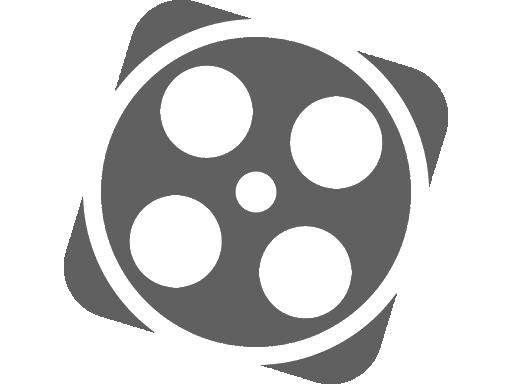What is Turing-Completeness in Ethereum?
If it ever finds a number that isn’t, it halts; otherwise it goes on forever. Without needing to run the function, all we’d need to know is if it would ever halt or not. Whether or not you can make HTTP requests or access the file system is not a property of the programming language itself.
‘Turing Completeness’ and Early Computing
It spawned studies about computability, algorithmic complexity, etcetera. Turing had accidentally created the field of computer science as we know it today. A programming language is said to be Turing complete or computationally universal if it can be used to simulate arbitrary Turing machines. Bitcoin and Ethereum provide the best-known contrast for Turing completeness. Bitcoin, and its Script programming language, was designed as a non-Turing complete system with limited functionality. The Bitcoin software was programmed solely roll chain link galvanized to process bitcoin transactions and cannot support complex, multi-step smart contract logic.
To prove that something is Turing complete, it is sufficient to show that it can simulate some other Turing complete system. Usually, it is easiest to show that a system can simulate a universal Turing machine. A universal Turing machine is a Turing machine that can simulate any other Turing machine. For example, if a Turing machine has two states, when the head reads an “A” symbol in state \(1\), the machine might do one thing, and if the head reads an “A” symbol in state \(2\), it can do a different thing. As shown in the animation above, a Turing machine consists of a tape that is initialized with a string of symbols. The machine has a head that reads and writes symbols as it moves along the tape.
- While Turing Completeness brings enhanced functionality, it unfortunately also introduces a range of potential security challenges.
- This says nothing about the effort needed to write the program, or the time it may take for the machine to perform the calculation, or any abilities the machine may possess that have nothing to do with computation.
- In the context of smart contracts, Turing completeness means that these contracts can be programmed to perform any conceivable computation or action within a cryptocurrency system, provided it adheres to the defined rules.
- A Turing complete system is capable of performing any computation or algorithm, given enough resources and time.
Furthermore, the concept does not account for the efficiency or practicality of solving problems, only the theoretical capability to do so. At its core, Turing Completeness is a criterion used to determine the computational equivalence of a system to a universal Turing machine. A Turing machine, in theoretical computer science, is an abstract machine that manipulates symbols on a strip of tape according to a set of rules.
History of Turing complete systems
This means said system can run any calculation that a Turing Machine can. A language is recognizable if a Turing machine accepts when an input string is in the language, and either rejects or loops forever when an input string is not in the language. In other words, if a language is recognizable there are strings not in the language for which the Turing machine may not halt.
6 What’s Interesting About Postscript
In simple terms, Turing Completeness refers to a system that can simulate the functional operations of any other computer system, given sufficient time and resources. Named after the British mathematician and computer scientist, Alan Turing, if a language or program is Turing Complete, it has computational universality. This is a significant aspect in the field of computer science, which reflects on its potential computational power and flexibility. Not in terms of performance or maintainability or how rich its ecosystem is.
Before the age of modern computing, researchers were interested in the theoretical possibilities of what computers could achieve. In 1936, Alan Turing published a paper in which he described a hypothetical machine that’s capable of reading a simple set of arbitrary instructions based on code. The machine would have an infinite length of tape divided into boxes, where each box can be read in turn by the 5 best bitcoin mining software the machine. One necessary condition is a loop with a maximum iteration count that is not determined ahead of the iteration, or recursion where the maximum recursion depth is not determined ahead. Loops as you find them in many newer languages are not enough to make the language turing complete (but they will have other means). Note that this doesn’t mean limited number of iterations or limited recursion depth, but that the maximum iterations and recursion depth must be calculated ahead.
In fact, the open-source Postscript processor ghostscript has long been able to can read and process PDF as well as the Postscript language it was originally designed to handle. Like Postscript, PDF is actually a programming language, so that printer drivers are sending programs, not raw images to printers. Printers are, in the minds of most users, simple appliances compared to “real” computers. However, it is important to note that very few Ethereum smart contracts utilize recursive loops and other capabilities which require Turing completeness. Charles Babbage’s analytical engine (1830s) would have been the first Turing-complete machine if it had been built at the time it was designed.
This concept is named after Alan Turing, a pioneer in computing theory and artificial intelligence. In essence, a computational system is considered Turing complete if it can simulate any Turing machine. This implies that the system can compute any computable function or solve any computation problem given adequate time and resources. Understanding Turing Completeness provides insight into the fundamental capabilities and limitations of computers and programming languages.
What Is the Significance of the Halting Problem in Relation to Turing Completeness?
But there are plenty of other things that models of computation might fail to do. For example, no deterministic finite automaton (DFA) can recognize the class of strings consisting of some number of $a$s followed by the same number of $b$s. Turing machines, on the other hand, can recognize that class of strings. Postscript is powerful enough to compute some very complicated graphics, e.g., fractals. But, on the slow cheap CPUs embedded into many printers, such calculations could take a long want to get hired in ui ux show these 8 skills in your portfolio time, giving an impression that the printer was no longer working.
On the security front, Turing Complete blockchains are potentially more vulnerable compared to their non-Turing complete counterparts. This vulnerability arises because Turing completeness can potentially execute any type of program including malicious ones. So, if an attacker can introduce a malicious program or virus into the blockchain, it can potentially disrupt the entire network, leading to security concerns. The concept of Turing Completeness in cryptocurrencies has a significant impact on blockchain technology. Blockchain developers must make a crucial decision of whether to use a Turing Complete language or not.
This highly flexible and autonomous structure allows for more complex operational tasks, thereby enhancing the potential use-cases for smart contracts. Considering performance, Turing Completeness can offer extensive flexibility as it can execute virtually any computational task. If a blockchain is Turing complete, it can be slower due to the greater processing power required to run complex computations and carry out multiple tasks simultaneously. The time taken to validate transactions can increase significantly, hence affecting efficiency. The point of this simplification, in turn, is that this makes it easy(ish) to ponder about theoretical questions (like halting problems, complexity classes and whatever theoretical computer science bothers itself with). One feature in particular is that it is usually very easy to verify whether a given language or computer can simulate a Turing Machine by simply programming said Turing Machine (which is so easy!) in that language.


